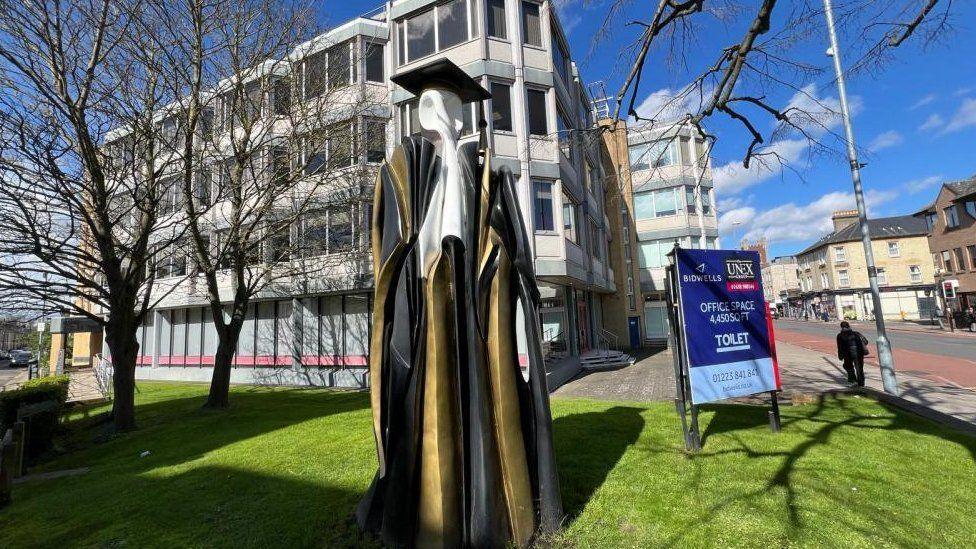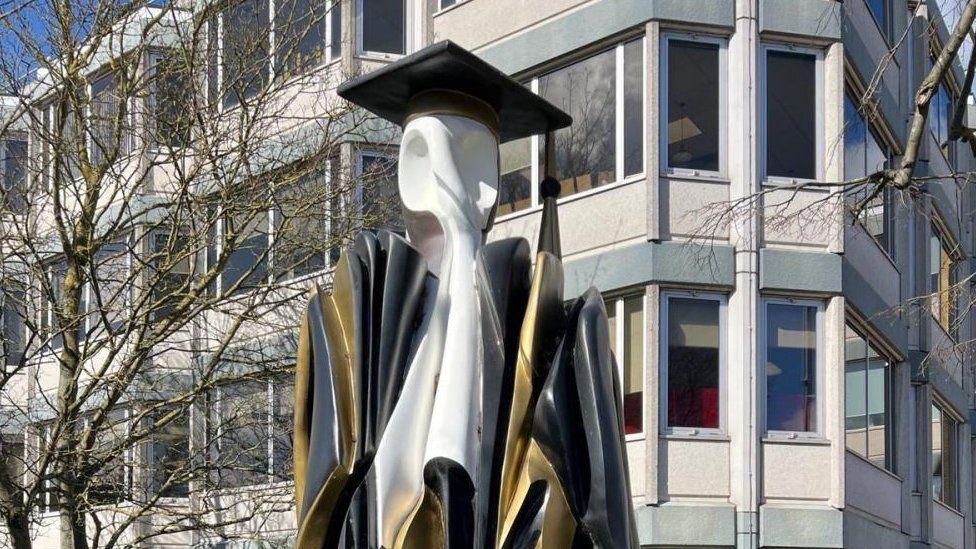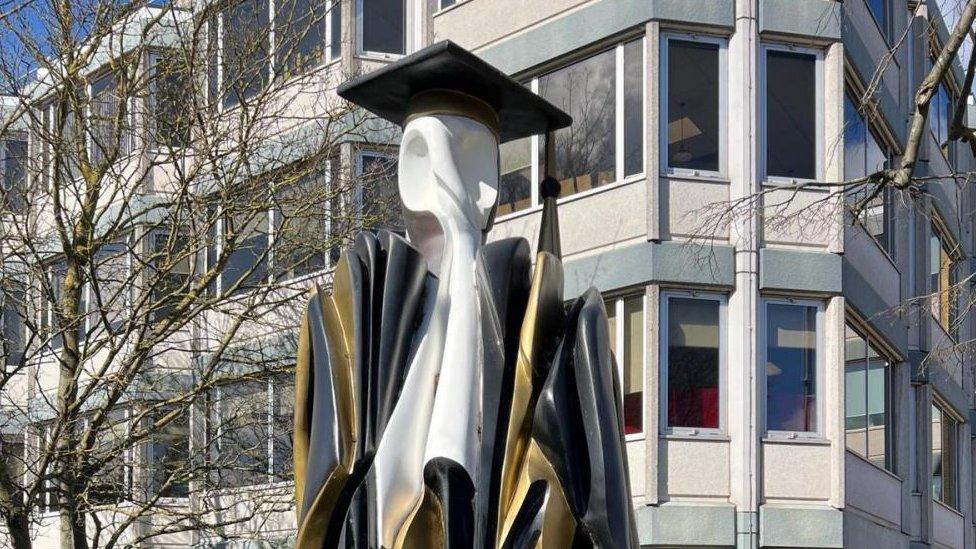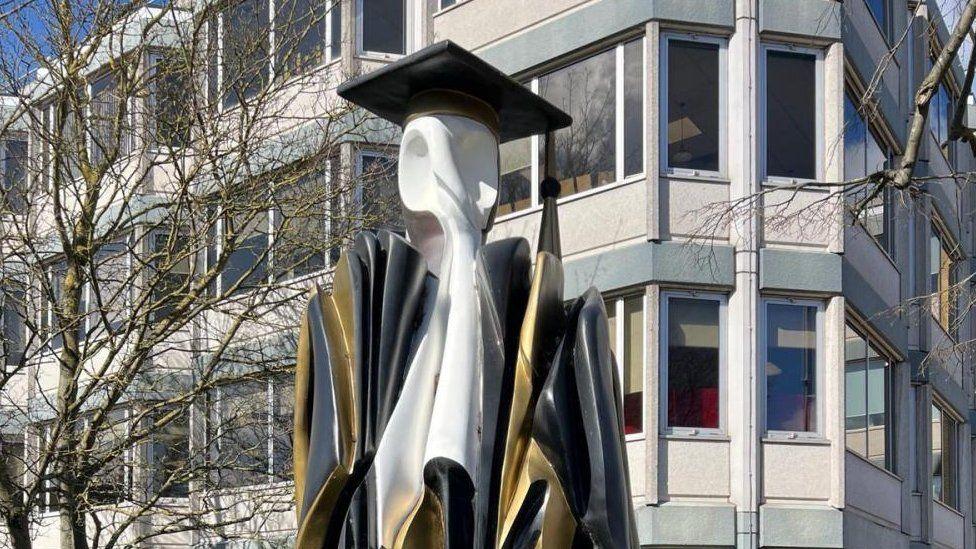Legal dispute continues over ‘The Cambridge Don’

The bronze figure commemorates the late Prince Philip's 35 years as Chancellor of Cambridge University
- Published
The owners of The Cambridge Don statue say they do not need planning permission for the four-metre tall (13ft), three-tonne, cast bronze sculpture.
Arguments were made at a public inquiry after Unex Ltd appealed against a city council enforcement notice ordering for the statue to be removed.
Representatives of the company said it was never fixed to the ground and was just an object placed along Hills Road, in Cambridge.
Cambridge City Council insisted creating a concrete foundation and placing the statue on it does count as development.

Legal representatives for owners Unex Ltd said that if planning permission was expected, it should be granted as the statue did not harm the conservation area
The city council said the statue should be removed and claimed it had been erected without planning permission on land outside Charter House, on Hills Road, Cambridge.
The Local Democracy Reporting Service said the statue's owners, who paid about £150,000 for it, disputed the need for planning permission as it was not fixed to the ground.
Their legal representative added it was "simply dropped in place and is able to be lifted up," so "cannot as a matter of law be considered development".
The statue has since moved to the corner of Hills Road and Norwich Street to "illustrate the point that it is not a building, but quintessentially a moveable object".
Patricia Farra, from Norwich Street, said she and others had been "furious" when it was moved with no prior warning.
She said the size of the statue was out of proportion with the rest of the street and "went totally against the conservation area".
Ms Farra noted "a lot of local anger" at how much it was costing the city council to fight the appeal against its enforcement notice.
'Real concern'
A city council legal representative said the "erection of the statue, including its associated plinth" was development undertaken in a conservation area without permission.
They added the "scale, height and prominent location of the unauthorised development" had an "overbearing" and "harmful impact" on the area with no public benefits of the statue to outweigh the harm caused.
One ward councillor, Katie Porrer, told the hearing she and the other councillors were concerned about the statue.
She said it had "caused real concern for residents" when it appeared and was "even more concerned" to hear that the statue was not secured to the foundations.
Get in touch
Do you have a story suggestion for Cambridgeshire?
Follow Cambridgeshire news on BBC Sounds, Facebook, external, Instagram, external and X, external.
Related topics
- Published27 March 2024

- Published26 June 2024
